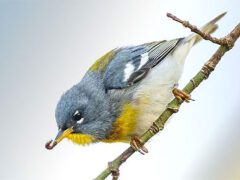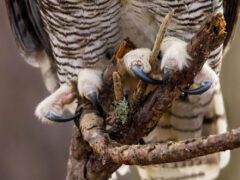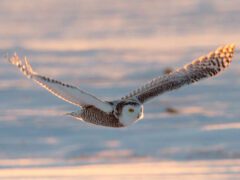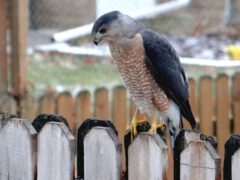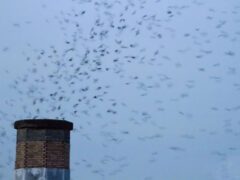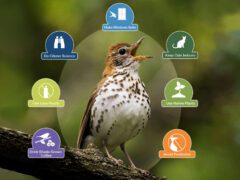Wilson's Phalarope Photo Gallery
Breeding female
Small shorebird with long legs, a slender neck, and a very thin, straight, bill. Breeding females are more brightly colored than males with a dark stripe down the neck, a blue-gray back, and a peachy neck.
© Brendan Klick / Macaulay LibraryMichigan, June 11, 2017Breeding male
Slender shorebird with a thin bill. Males are often duller than females, lacking the black neck stripe.
© Alix d'Entremont / Macaulay LibraryBritish Columbia, May 28, 2017Breeding females and males
Classic foraging behavior is to swim in tight circles, creating a vortex that brings prey items up toward the surface.
© Brian Sullivan / Macaulay LibraryCalifornia, April 28, 2014Not all videos have soundJuvenile
Juveniles have a dark cap and scaly-looking backs that vary in color from grayish to rusty.
© Steven Mlodinow / Macaulay LibraryWashington, July 26, 2008Breeding male
In flight, note white rump, grayish tail, and plain grayish wings.
© Russ Morgan / Macaulay LibraryOregon, July 15, 2017Juvenile
Slender shorebird with a long, thin bill. Juveniles have a dark cap and a scaly-looking back that varies from grayish to rusty. Sits high in the water.
© Brian Sullivan / Macaulay LibraryCalifornia, July 12, 2008Juvenile
Juveniles and nonbreeding adults have yellow legs. When foraging on land moves quickly and frantically.
© Michael Todd / Macaulay LibraryTennessee, September 13, 2014Juvenile (with Semipalmated Sandpiper)
Larger than "peep" sandpipers (like Semipalmated, at right). Juveniles and nonbreeding adults have yellow legs. Juveniles have a dark cap and white neck and belly.
© Carl Giometti 🍹 / Macaulay LibraryIllinois, August 27, 2016Nonbreeding adult
When foraging on land moves quickly, often in a crouched position.
© Josh Fecteau / Macaulay LibraryMaine, May 16, 2017Nonbreeding adult
Note white neck and belly, thin bill, and slender-bodied look.
© Cara Barnhill / Macaulay LibraryCalifornia, August 26, 2012Adult
Regularly swims in open water and often spins in circles to bring small food items within reach of its slender bill. Sits high in the water.
© Steve Kelling / Macaulay LibraryEl Callao, April 29, 2017Habitat
Breeds in marshes and spends winters in South America, mainly on high lakes in the Andes. On migration, large numbers congregate on salty lakes and coastal marshes of western North America.
© Monica Siebert / Macaulay LibraryQuebec, May 17, 2017Compare with Similar Species
Click on an image to compare
Species in This Family
Sandpipers and Allies(Order: Charadriiformes, Family: Scolopacidae)
More to Read
Don't miss a thing! Join our email list
The Cornell Lab will send you updates about birds,
birding, and opportunities to help bird conservation.









































